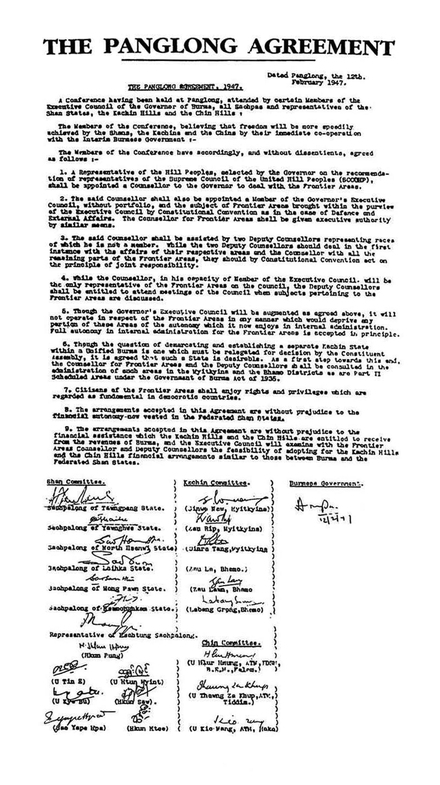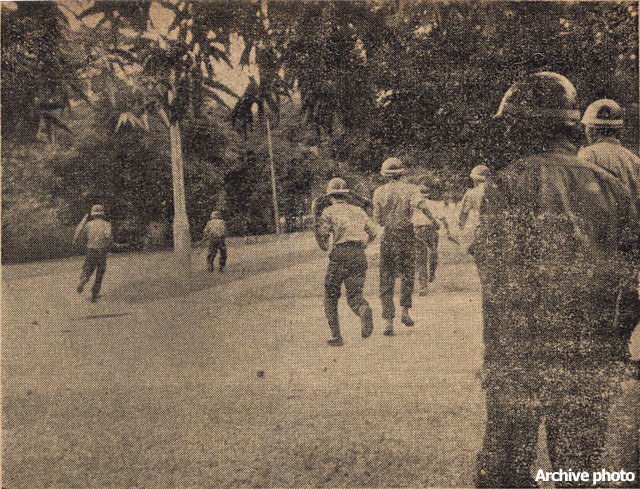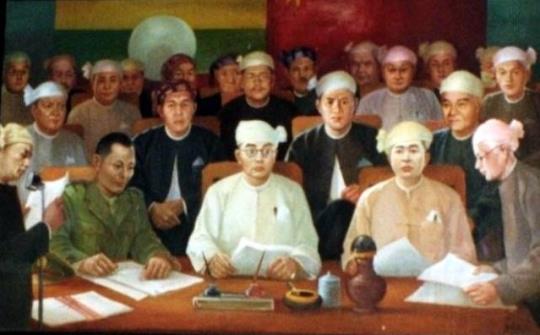Once again, it is the 73rd anniversary of Union Day, in other words it is the signing of Panglong Agreement on 12 February 1947, 73 years ago.

When the treaty was signed between the then Burma Proper or Ministerial Burma and Hill Peoples, Chin and Kachin, and Federated Shan States, the founders envisaged an ethnically equal federal union in which political power-sharing and resources-sharing were to be the norms. But after the assassination of General Aung San, on whom the ethnic nationalities placed their most trust, on 19 July 1947, the promised constitution was altered to suit the Bamar political elite of the day and became unitary instead of federal.
To our country’s great cost, neither the Panglong agreements nor Aung San’s principles were incorporated into the 1947 Union of Burma Constitution. The eventual text was inappropriately drafted and implemented after the assassination of Aung San and most of his cabinet by the gang of a political rival in July that year. Although Aung San was sincere in his commitment to the formation of a union or federal system of governance, his successor U Nu was not to be the same. U Nu asked Chan Htun, a constitutional adviser, to redraft the text into a semi-unitary Union Constitution that was promulgated by the Constituent Assembly of the Interim Burmese Government in September 1947. Chan Htun and U Nu were assisted by the appointment of Tin Tut, Sir Ba U, E Maung and Kyaw Myint, all of whom were ethnic Bamar and educated in the law school of Cambridge University. The result was that the new Union of Burma, despite the prior promises and agreements with ethnic nationality leaders, did not become a genuine federal union, an ambiguity that Chan Htun himself later admitted: “Our country, though in theory federal, is in practice unitary.” (Source: Jump-starting the stalled peace process, by Sai Wansai, published by Transnational Institute, 4 May 2017.)
More than seven decades later, the federal union envisaged by our founding forefathers is still nowhere in sight. The more than twenty or so ethnic armed organizations resisting the Bamar or Burmese center is a stark reminder and reality; and no one can be doubtful that these resistance movements stemmed from political grievances which could not be realized within the political arena.
The problem lies in the fact that the successive Bamar political elite and military cannot simply brush off their ingrained, Bamar supremacy doctrine and view the non-Bamar ethnic nationalities and their states as colonial possessions. And naturally and as it is, for decades the non-Bamar ethnic nationalities have been waging the war of resistance to wrestle back their birthright sovereignty and rights of self-determination.

In reality, since the 1962 military coup, due to the non-Bamar ethnic nationalities’ demand for genuine federalism, and the abolition of 1947 Panglong Agreement, which is the only legal bond between the Bamar and non-Bamar ethnic nationalities, including the 1947 Union of Burma Constitution, it can be taken that the Union is no more in existence, due to the breaching of treaty by the Bamar military government.
Thus, starting from 1962 onward the “voluntary union” is no more and only the “forced union,” under the gun point exist at present. Because of this the nationwide ceasefire agreement (NCA)-based negotiation process may be viewed an attempt to resettle the political difference and acceptable political system that all could live with.
The Bamar political class and as well the military always like to emphasize “non-disintegration of the Union,” which is like putting the cart before the horse.
To be able to preserve the Union, there has to be a “common national identity” which all ethnic groups, including Bamar, could identify with. But in order to forge such an identity political power-sharing and resources-sharing will have to be in place first. It just won’t do because the Burma Socialist Programme Party (BSPP) Constitution, drafted under General Ne Win, has adopted “Myanmar” as a common national identity, it is already accepted and no need to discuss anymore.
To be precised and come to the point “common national identity” can be achieved only through agreement on how decision-making power and resources are equitably shared between all peoples residing within the boundary of Burma.
This is a reminder that we are still a long way to achieve a common national identity and thus to talk about non-disintegration of the Union is not called for and still further ahead. If we want to really give another try to forge an equitable federal union that all could be proud and live with, it is now time to seriously start with the first step nation-building by trying to achieve a common national identity so that the rest crucial agendas could follow.




